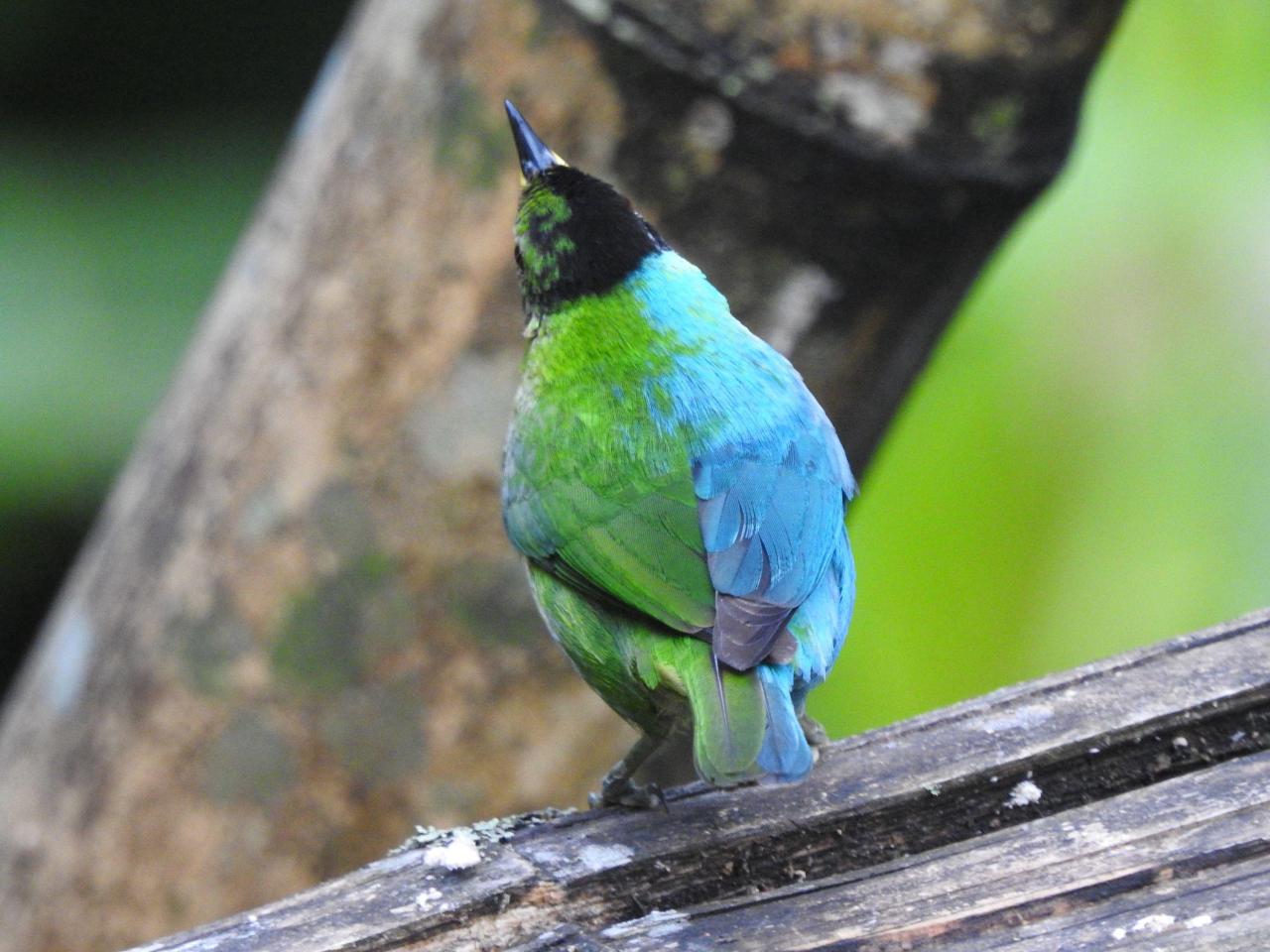
Meet the Enigma: The Half-Male, Half-Female Super Rare Bird Discovered in Colombia
Imagine a creature that defies the norms of nature, a testament to the wonders of genetic diversity. In the lush wilderness of Colombia, scientists have uncovered a remarkable discovery: a super rare bird that possesses the extraordinary characteristic of being both male and female at the same time.
A Unique Anomaly: The Half-Jantan, Half-Betina Bird
This exceptional discovery sends ripples through the scientific community. The half-male, half-female bird, known locally as the "Burung Super Langka," exhibits a rare condition known as gynandromorphism. This phenomenon occurs when an individual develops with both male and female reproductive organs.
Gynandromorphism is a perplexing condition that challenges our understanding of biological categorization. In the case of this avian enigma, the left side of its body displays male characteristics, including a black plumage and a distinctive song, while the right side exhibits female traits, adorned with a brown and white plumage.
The Intriguing Biology of Gynandromorphism
To fully grasp the significance of this discovery, we must delve into the intricacies of avian biology. Gender determination in birds is governed by specialized sex chromosomes: Z and W. Typically, male birds carry ZZ chromosomes, while female birds possess ZW chromosomes.
However, in the case of gynandromorphic individuals, an unusual genetic event occurs during development. This event results in a combination of ZZ and ZW chromosomes within a single bird. Consequently, one side of the body develops male characteristics under the influence of the ZZ chromosomes, while the other side develops female traits under the ZW influence.
The Prevalence and Implications of Gynandromorphism
Gynandromorphism, although fascinating, is a relatively rare phenomenon in the avian world. It occurs only in select species and with varying degrees of manifestation. For instance, some gynandromorphic birds may exhibit a more even distribution of male and female traits, while others, like the Burung Super Langka, showcase a sharp divide between the two sexes on either side of their bodies.
The occurrence of gynandromorphism has significant implications for our understanding of genetic diversity and the adaptability of species in the face of changing environmental conditions. It highlights the complex interplay between genes and the environment in shaping the unique characteristics of each individual organism.
The Significance of the Burung Super Langka
The discovery of the Burung Super Langka in Colombia has ignited excitement and curiosity among ornithologists and conservationists alike. This exceptional bird serves as a testament to the boundless diversity of the natural world and the hidden wonders that await discovery.
Moreover, it underscores the importance of preserving biodiversity and understanding the intricate mechanisms that govern the survival and evolution of species. By unraveling the mysteries surrounding gynandromorphic individuals, we gain valuable insights into the genetic underpinnings of biological diversity and the remarkable resilience of the avian world.
The Future of Avian Genetic Exploration
The discovery of the Burung Super Langka in Colombia opens up new avenues for avian genetic exploration. Through ongoing research and international collaboration, scientists aim to unravel the specific genetic mechanisms that give rise to gynandromorphism.
By sequencing the genome of this extraordinary individual, researchers may uncover novel insights into the regulation of gene expression and the complex interplay between sex determination and the development of physical traits. Additionally, studies on the behavior and reproductive capabilities of gynandromorphic birds will shed light on their ecological roles and their potential contributions to the gene pool.
Conservation Implications: Protecting Genetic Diversity
The discovery of the Burung Super Langka not only sparks scientific curiosity but also emphasizes the importance of conservation efforts aimed at protecting genetic diversity. Preserving the habitats and populations of rare and endangered species is crucial to safeguarding the rich tapestry of genetic variation that underpins the resilience and adaptability of life on Earth.
By promoting sustainable practices, combating habitat loss, and implementing targeted conservation strategies, we can ensure that future generations have the opportunity to marvel at the extraordinary wonders of the natural world, including the enigmatic Burung Super Langka.
Conclusion: The Enduring Legacy of the Burung Super Langka
The discovery of the half-male, half-female bird in Colombia has left an indomitable mark on ornithological history. This exceptional individual serves as a testament to the boundless diversity of nature and the indomitable spirit of scientific exploration.
While the Burung Super Langka may be a rare anomaly, it represents the resilience and adaptability that permeates the natural world. Its discovery challenges our conventional understanding of biological categorization and inspires us to delve deeper into the mysteries of genetic diversity.
As we continue to explore the intricacies of gynandromorphism and the unique characteristics of individual organisms, we unlock valuable insights that enrich our understanding of the complexities of life. May the legacy of the Burung Super Langka endure, forever inspiring us to marvel at the wonders that lie beyond our grasp.
FAQs:
1. What causes gynandromorphism in birds?
Gynandromorphism occurs due to an unusual genetic event during development, resulting in a combination of ZZ and ZW chromosomes within a single bird. This leads to the development of male characteristics on one side of the body and female characteristics on the other.
2. How common is gynandromorphism in birds?
Gynandromorphism is a relatively rare phenomenon in birds, occurring only in select species and with varying degrees of manifestation.
3. Can gynandromorphic birds reproduce?
The reproductive capabilities of gynandromorphic birds vary depending on the distribution of male and female reproductive organs within their bodies. Some individuals may be capable of limited reproduction, while others may be entirely sterile.
4. What is the significance of the Burung Super Langka discovery?
The Burung Super Langka discovery highlights the extraordinary diversity of the natural world and the importance of understanding the intricate mechanisms that govern the survival and evolution of species. It also emphasizes the need for conservation efforts to protect genetic diversity.
5. How can we contribute to the conservation of genetic diversity?
We can contribute to the conservation of genetic diversity by promoting sustainable practices, combating habitat loss, and supporting targeted conservation strategies aimed at protecting rare and endangered species and their habitats.





